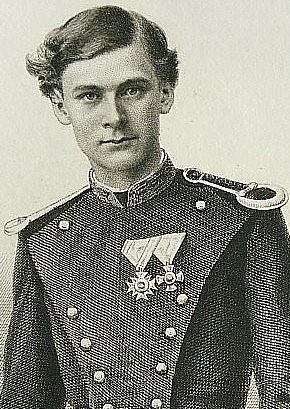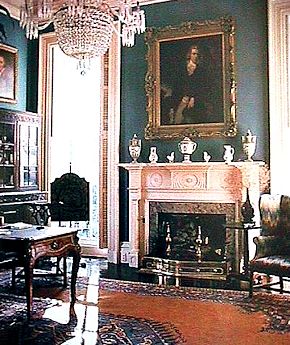2004.01.07
Mom and the Baroness von Ow
Konrad, Franciska, Johannes (14), Rudolf (13), Monika (12), Georg (7), Alicia, a baby girl that died.
Dr. Egon Pavlichek, wife Lillo
1940 worked over a year at Sombar for Serbians.
1943 at the Baron;s; bombs over Harlaching.
1944 at Dr. Otto Schuster’s, a dermatologist, at the summer house at Grebenzelt. Began in Autumn 1943 and stayed six months.
1 January 1945 was sent to Russia.
May 1942 at Brestowatz for three months, then a three week job in Munich, and then in mid-August started working at the Barons. The Summer of 1943 was spent at Wachendorf Gut Neuhaus, near the Neckar River. (Hohenzollern Schloss? in the distance)
The Barons had a nun to nurse the baby, who said the baby was well. The Baroness hit the baby and it later died.
They also had a nanny.
Magdalene was to teach the children French.
The Baroness no longer had a personal maid.
Baron left (in the morning) and didn’t say good-bye anymore. "I'm only good enough to bring children into the world."
Graffen Cirella or "Tante Cirella" was the other woman. The Baron even invited her to Saturday dinner (12 noon).
Magdalene was from Belgium, but she was ethnically Polish. She spoke French, German, and Polish. Her father visited a couple of times; he was a hard worker, a railroad maintenance guy.
Brother Stefan was working in Munich; he told Mom how to get there. He was drafted but named not fit enough (he broke his arm twice in childhood), and the work he was doing was war necessary.
The Baroness also had a chauffer before Mom worked there; it was her car that was in the garage without tires. The baron’s car was taken outright. After that he took the trolly to work.
Magdalene was the house maid.
Rosa was the cook, who was hired after the old cook Maria from Munich married.
Elisabeth was Magdalene;s friend who worked with Mom at Dr. Pavlichek's; she brought Mom to the Barons.
Mom interviewed with the Baron in Spring 1942 before going back the Brestowatz for three months. The Baron made all of Mom's travel arrangements through Vienna and Budapest.
There were mostly Polish field-workers at Gut Neuhaus. The workers ate well. There was a Vorwalder and Vorwalderin and a neice cooked for the workers at Gut Neuhaus. Mom cooked only for the Baron household. When they arrived at the train station they had to wait till night time to be driven to the Gut; 'luxery' driving was not allowed.
Dr. Pavlichek had a new Mercedes; he had connections.
The meals at the Baron's were breakfast, lunch at midday, coffee and a roll at 4:00, dinner at 6:00.
The Baroness almost everyday rode her bike into the city.
The Baroness bought meat every Saturday morning for the whole week. Mom bought milk, bread, and vegetables every morning at a shop at Linden Str. and Theodolinden Platz.
Address was 45 Linden Strasse.
Free time for Mom was every second Sunday afternoon, and every Wednesday after lunch to 10 pm.
Mom and Magdelene shared a room on the ground floor.
1st floor: hall, pantry w/lift, dining room, living room w/ big piano, little Japanese room, small Baroness’s room with desk, master bedroom and master bath.
2nd floor: bedrooms, study for the kids, bathroom with three sinks in a row.
ground floor: kitchen, sewing room, wash kitchen, 2 servant's rooms.
Franziska von Ow studied at the University of Prague, Czechoslovakia. She met someone there that was not of (Austrian) nobility, who her parents didn't like, and she was taken home. She had a sister that married first, and thus got most from the family.
The Baron was maybe a Bavarian or a Schwab (because of the Gut).
Baron said he never ate such good cookies as from Mom's home recipes. The Baroness couldn't cook at all.
Dr. Pavlichek lived at 2 Defregger Str., and the von Ow dining room window looked down into Defregger Str.
In 1950 45 Linden Str. was (still) occupied by US Allied officers/military; Mom went by the house after she returned from Russia. The 'maid' there told Mom that the von Ows were then living at Regensberg.
Mom once heard the Baron say the the Baroness "Frag nicht so dum!", but the Baron was overall a good guy. He told Mom at the interview that "all our help is like family," and that made Mom feel good.
Christmas 1942 was in the Japanese Room; a goose for dinner, cookies and singing, played Mülhe with the kids.
They called Mom Rosie.
Once the Baroness went home to Austria, and then the Baron had a blonde woman friend stay overnight in a guest room on the 2nd floor. Mom tried her best to let the guest know that Mom didn’t think too kindly of her.
Rudolf Hess (lived on Harthauser Str?) lived a block down Grunwald Str. where there were lots of villas. The Barons were special friends with Hess.
The Baron was in the military in the beginning of World War II, but was let go to be with his family (5 children).
The was a separate house at the back of the Baron’s property, rented to an elderly couple.
Mom often saw Mrs. Pavlichek walk by the dining room window; Mom was in charge of cleaning the dining room.
Mom's salery at the Baron's was 69 marks a month, as opposed to 45 marks a month at Dr. Pavlichek's.
| |
2004.01.10 12:33
the making of "My Rita Novel Idea"
James A. Williams, Franziska the Baroness von Ow, Eva Stotesbury, King Ludwig II of Bavaria, Napoleon, Giovanni Battista Piranesi, Peter Paul Rubens, Maria the first wife of Honorius, Eutropia, and Heilige Helena are the main characters.
Rubens tells us about all the research he did after receiving his first public commission of three altarpieces for the crypt chapel of St. Helena in Santa Croce in Gerusalemme. Plus he thoroughly discusses his designs of the History of Constantine the Great tapestries that presently hang in the Great Hall of the Philadelphia Museum of Art.
Ludwig II tells us a lot about his schizophrenic brother Otto.
Napoleon won't stop talking about playing double-deck solitaire while exiled on St. Helena.
Eva still enjoys the company of Cardinal Dougherty, and Franziska hasn't forgotten the delicious cookies baked by the last cook she had before the end of World War II.
We (surprisingly) find out that Eutropia personally knew all the important Roman Empire architecture of late antiquity, and Helena rarely stops talking about Eutropia, that is, when she's not talking about being excluded from history.
Maria tells us about the symbolic role played by her sarcophagus and sepulcher within Piranesi's Il Campo Marzio, and Piranesi outlines all the mistakes made by Fasolo, Tafuri, Allen, Bloomer, and Eisenman in their respective interpretations of the Ichnographia Campus Martius.
Jim explains the letters he wrote while in jail circa 1983/4, and fondly remembers his last trip to Philadelphia.
2004.01.10 14:42
in the virtual realm
The fact that letters (of which I have some) written by Jim Williams while in jail for the murder of Danny do exist could very well engender the heretofore unexpected "sequel" to Midnight in the Garden of Good and Evil--a virtual terror castle, I'm sure--and how long was that book on the bestseller list?
from Joyce's Ulysses:
"Bringing his host down and knelling he heard twine the second bell the first bell in the transept (he is lifting his) and, rising, heard (now I am lifting) their two bells (he is knelling) twang in diphthong."
2004.01.12 12:09
Re: Response to Posting of Bush Posting
Who wants to design the museumpeace talk table?
Was that Felix, Bishop of Passau, in the large painting hanging in the dining room?
Confucius [forgot to] say:
"You can only close that which is open, and only open that which is closed."
"Knox Knox"
"Who's there?"
"Descendent of Philippe le Beau."
"Then Haps right in."
Make that a peace talk table with musical chairs! Sehnsucht nach dem Paradies!
"Knox Knox"
"Who's there?"
"Fatima Mestani."
"Brava"
in other news:
twelve year old daughter of top general marries fourteen year old emperor--this will greatly effect the state of world fashion
Oh Holy Hearts at Altötting.
| |
2004.01.13 15:05
elliptical fluency
Is that like a babble of tongues?
If Napoleon had fled to America exactly like his brother Joseph, he would have spent the rest of his life in and around Philadelphia (as opposed to the remote(st) island, St. Helena). When Joseph fled, he took one of the gold crests that were originally on either side of Napoleon's Imperial coronation coach--today a prized possession of the Philadelphia Athenaeum. Jim Williams of Savannah owned the other Napoleonic crest during the later decade of his life.
Napoleon, of course, finds it hilarious that one of the latest theories about what illnesses he may have had is that he was gradually changing into a female. He still laughs about it at least a couple of times a day. "Yes, it was all because of that stupid solitaire game I played everyday!" And then he starts laughing all over again.
When Rubens writes within "My Rita Novel Idea" it will not be in his customary Italian, rather his completely rare modern English.
Jail House reading material:
Music for Chameleons
by Truman Capote
2004.01.14 14:31
the Design List Configuration
If design-l goes anti political content, will that mean that content regarding Helena will be censored? She was an empress and that's a political position isn't it?
And what about talking about the design of Washington DC? That place is a political hotbed isn't it?
Imagine knowing someone with the personality of the aging Maximianus Herculius. I'm kinda seeing that now. This might just help a lot when Eutropia writes within "My Rita Novel Idea" since she was married to the guy.
from soup du jour to deja vu:
"During High Mass in the Frauenkirche on Corpus Christi Day 1875 [Otto] had caused a public scandal by bursting into the church 'dressed in a shooting jacket and wide-awake', throwing himself on the altar steps at the feet of the Archbishop and loudly confessing his sins."

Otto lived till 1916, thus spent something like forty years confined to three rooms within a 'schloss' on the outskirts of Munich.
| |
2004.01.14 14:34
Re: elliptical fluency
Jim Williams died today fourteen years ago, in the same room where Danny was shot dead by Jim. Oddly, I had a good time in the room. Napoleon was sort of there too, along with that hourglass filled with specks of gold--"A minute of your life."

Savannah timeline online.
Licinius and Constantia are not represented within The Marriage of Constantine and Fausta. Only second-guessing scholarship says so. And the two figures on the left are not oblivious.
Several von Ows live near Altötting.
"So how does Eva Stotesbury relate to Helena?" Nancy asked. "Eva hangs-out a lot with Cardinal Dougherty (ever since getting to know well him at the opening of Whitemarsh Hall), and Cardinal Dougherty High School is a big part of St. Helena Parish, Philadelphia. And weren't you married in St. Helena's Church?!?" the reclusive pilgrim replied.
At first I thought Eva was going to be the big camp, but now I think it's going to be the two-deck Napoleon.
Contrary to his mortal existence, Ludwig II is now the exact opposite of a recluse, quite the popular "King of Tourism", and quite the intellectual as well. Perhaps he will share his dissertation on reenactment (if you can stand all the autobiographical parts).
Has anyone here (besides me) ever read The Changing Light at Sandover by James Merrill? How do you design a quartz pyramid so that it doesn't engender an atomic explosion? Is that why the ancient Egyptians fancied bald heads?
|

